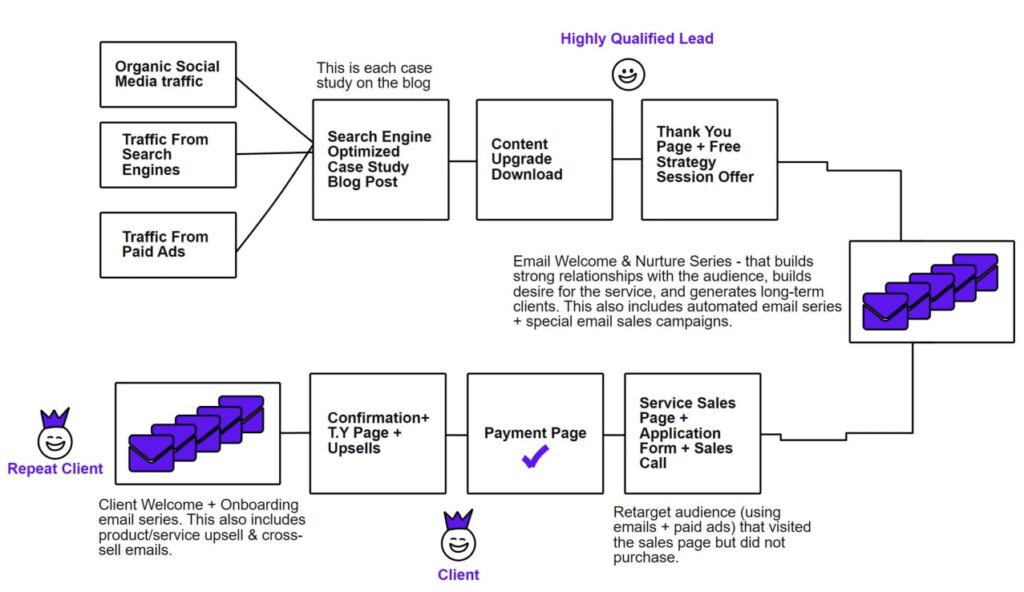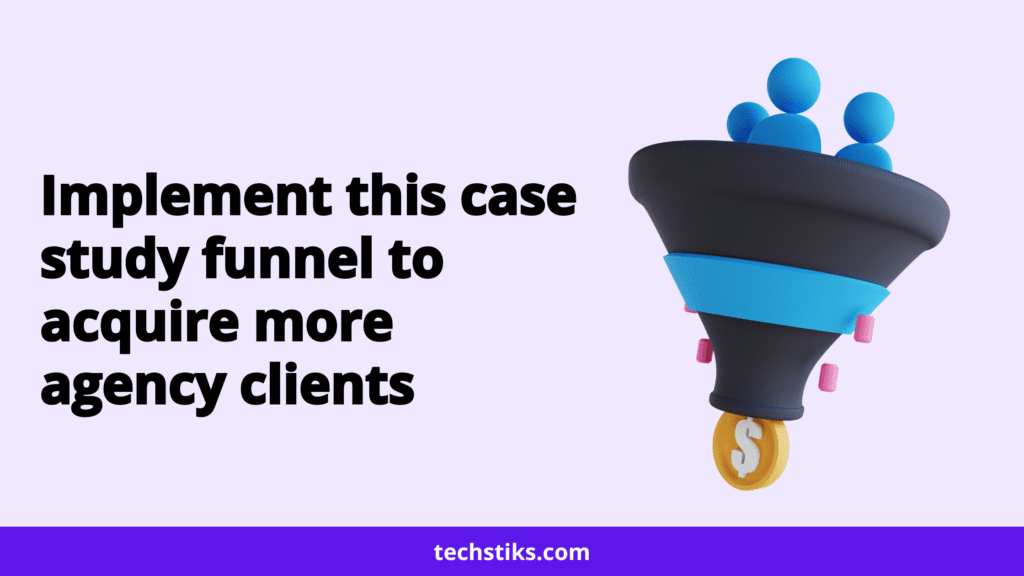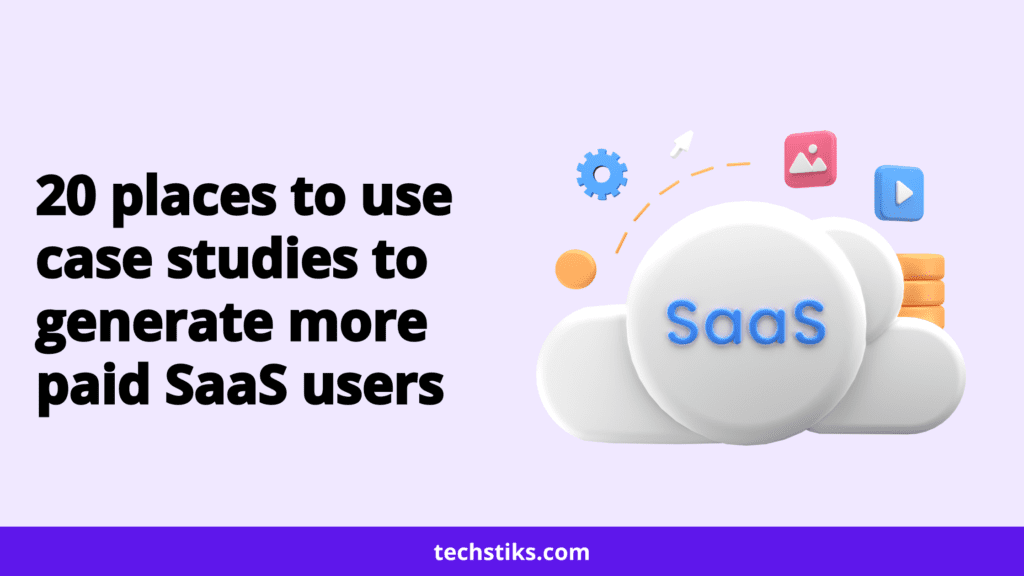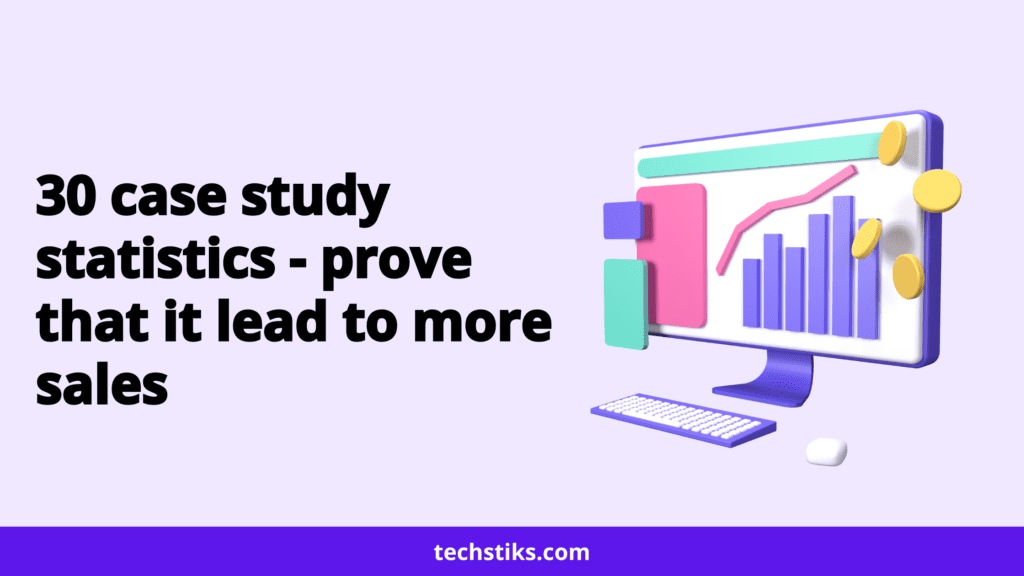As you already know the agency & service market currently is extremely competitive and there’s absolutely no sign of stopping.
The one big way using which your SaaS business can build more authority is through content creation & content marketing.
But there’s a big issue – with the advent of AI & Chatgpt, more and more quantities of content are already being created.
And, more content means more noise which further means more competition and difficulty in standing out in a crowded market.
Also, your competitors have access to the same tools as yours.
So, creating how-to content & tutorials is not a big deal now. Anybody can do that.
This type of content might get you traffic but your business needs clients.
So, that’s why your focus has to be on creating compelling case studies – that not only showcase your service as the optimal choice for your prospects but also share your client’s story in such a way that resonates with your prospects and boosts their purchase confidence.
The purpose behind this is to cater to both the emotional and logical side of your prospects.
Also, it’s said that people buy with emotion and justify with logic.
So, you can’t afford to ignore this point.
The best thing about case studies is that they are the only type of content that ChatGPT or any AI tool can never ever create.
Your case studies are your 1-1 experiences with clients that any AI tool can never know about.
Your case studies are your business’s #1 sales asset.
If case studies are presented in a well-written format, it offers various advantages.
What you’ll learn in this article
There are 5 big reasons to have well-written case studies
Build your authority
When you have more client stories on your website means more authority in your market and easily stand out from your competition.
Know your clients deeply
While creating case studies, when you get to interview your clients, you come to know a lot about them which isn’t possible otherwise.
This helps to develop a deeper understanding of your clients – which is crucial to build a long-term relationship with them.
Easily know your differentiation factor
If you want to know your differentiation factor then the best way to find out is by asking people who are already working with you as your clients.
So, when you interview your clients for case studies, you can easily ask them the questions –” why they decided to work with you” and “How was working with you like”.
When you get answers to these questions like these, you’ll easily know your differentiation factor which you can use to improve your messaging, positioning, and value proposition.
Better SEO
When case studies are properly optimized for search engines, they not only rank higher on search results but also drive lots of targeted traffic that would have a high probability of converting into clients.
Positive impact on purchase decision
Case studies act as BOFU content which means they have a very big role in impacting your target clients’ purchase decisions. Through your case studies, you can easily address many objections that your potential clients have related to your service.
Moreover, if you have more case studies than your competitors then your potential clients would consider investing in your service than in theirs.
This will not only shorten the sales cycle but also bring in more revenue for your business.
Not only that, the sales statistics also point heavily towards case studies
- A study by the Content Marketing Institute found that 71% of B2B buyers in the awareness stage and 77% in the evaluation stage consumed case studies.
- According to a survey by Demand Gen Report, 73% of B2B buyers said they have used case studies during their decision-making process.
- A survey conducted by Gartner found that B2B buyers spend 27% of their total buying time on case studies, making them one of the most consumed content types during the evaluation phase.
By now you must have understood the importance of case studies in fueling your business growth.
So now your question would be how exactly you can use case studies to acquire more users for your SaaS business.
The answer is using – The Case Study Funnel
What is a case study funnel for agency client acquisition?
It is a funnel that harnesses the power of case studies to generate your target market’s attention, build demand for your service, acquire leads, and ultimately turn them into long-term high value clients.
Here, the case study which is the bottom-of-the-funnel content acts as a growth engine – that not only demonstrates the value of your service but also showcases the client’s story in a way that resonates with the readers/prospects – thus increasing their trust & purchase confidence in your service.
The step-by-step breakdown of the case study funnel

Step #1: Craft a compelling case study
The first step in this funnel is to create a search engine-optimized case study blog post about a client that achieved great results using your service.
This blog post can be in the form of a narrative or Q&A format.
The case study should be written in such a manner that positions your client as a hero and your service as an ultimate solution to their problem.
Unfortunately, many agencies make the mistake of making their case studies all about them instead of their clients. In this case, the reader/potential client cannot resonate with it and leaves.
When a case study appears dull, people show no interest in reading it. Let alone, making a purchase decision. So, you need to put lots of effort into crafting a compelling case study.
In order to craft a compelling case study, select a client who has experienced significant success using your service. Then craft a detailed case study highlighting their journey—from initial challenges to the solution provided by your service and the tangible results achieved. This narrative should be engaging, relatable, and supported by quantifiable data and testimonials.
The success story becomes the focal point of your blog post.
Introduce the client, outline their challenges, and delve into how your service transformed their situation. Use visuals, such as graphs or before-and-after comparisons, to reinforce the impact.
The blog post should offer valuable insights while sparking curiosity about the full case study.
Step #2: Offer a compelling content upgrade
Create a downloadable PDF version of the case study.
This PDF should go beyond the blog post, offering deeper insights, additional tips, or exclusive content related to the success story.
Promote this upgrade within the blog post, enticing readers to download it in exchange for their email address.
What’s the purpose behind doing this?
This step serves a two-fold purpose.
The first one is to make them more interested in your content and the second one is to grow your email list which would make it easy for you to follow up with your potential clients and convert them into your clients.
Strategically place opt-in forms within the blog post to capture email addresses. These forms should emphasize the value of the content upgrade and encourage readers to take action. Compelling call-to-action buttons can significantly increase conversions.
You’ll generate traffic to your case study posts through search engines, social media, paid ads, and partnerships.
So, when the audience reads your case study blog post and will receive an option to download the case study as a PDF.
Once they opt-in, they will be given the offer to sign up for a free or paid strategy session since they now are highly qualified leads.
Even if they don’t opt in they can be retargeted through ads. Your main focus is to stay on top of their mind.
Step #3: Craft automated email sequences
Once they have downloaded the content upgrade, they will receive a series of emails including a welcome and nurture sequence that builds solid relationships with them, convinces them why your service is the right option for them, and what using your service would help them achieve.
Once the welcome series ends, you can start with the regular emails sent 2-4 times/week. These emails also include special promotional campaigns during occasions like Black Friday, New Year, etc. Also, you can create different audience segments based on their behavior, demographics, and journey.
The purpose behind these emails is to bring them closer to the sales i.e. book a sales call, fill out the application form, and ultimately purchase your service.
Step #4: Run paid ad campaigns
Use paid ads such as FB ads, LinkedIn ads, YouTube ads, Google ads, Reddit ads, etc. to drive people to read your case studies.
Since people are usually most interested in seeing how others are achieving results, they would be interested in reading the case study. However, the performance of this ad campaign depends on the ad copy and creative.
This ad campaign is best to build your authority and generate demand for your service.
Another great way you can increase the chances of conversion and sale is to retarget the audience using paid ads & emails e.g. browse abandonment who visited the sales page but did not purchase.
Step #5: Optimize the post-purchase experience
Once they purchase and become your client you can upsell them with other offers (if you already have) to increase your AOV.
After the purchase, they will receive the welcome and onboarding email sequence.
The purpose behind these emails is to help them avoid buyer’s remorse and give them the best service experience. Along with these emails, you can send them to upsell or cross-sell emails to turn them into repeat paid clients.
Benefits of implementing the case study funnel for your business
High authority
When you have multiple case studies about your successful client experience then your authority in your market will exponentially increase.
While your competitors will be competing on price, you can easily compete based on your superior client experience – which means you can charge a lot higher for your service without worrying about your competition.
Better ROI
When you invest your time & money in creating case studies then it has a far better ROI than other forms of content.
Since case studies have the maximum impact on your ideal client’s purchase decision, creating more & more case studies is going to only give you better results.
Having a case study funnel in place will not only automate your business growth but also making it easy for your potential clients to purchase your service.
More clients
Undoubtedly, your business needs more clients to keep thriving. So, setting up this case study funnel will make it easy for you to acquire more clients.
When your potential clients come across your case studies, they would feel more confident in your service hence making purchase decision fast.
CONCLUSION
Once you have this funnel in place then converting the audience from strangers into clients won’t be very difficult since throughout their journey they would have already realized the value of your service and its benefit for them in the long run.




